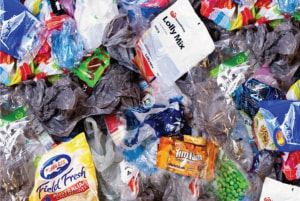The latest progress report on the non-alcoholic beverage industry’s sugar reduction pledge shows a 12 per cent drop in sugar per 100ml since 1 January 2015 to 30 June 2020.
Asahi Lifestyle Beverages, Coca-Cola Amatil, Coca-Cola Australia and PepsiCo Australia signed the pledge in June 2018 to reduce sugar across its product portfolios by 20 per cent by 2025. These four account for around 80 per cent of industry volume.
The first report in November 2019 recorded a seven per cent drop, measured by average reductions in total grams of sugar per 100mL. These latest results add five per cent to total reductions but in one third of the time.

Australian Beverages Council CEO Geoff Parker told Food & Drink Business that it was a good result, but it would be remiss not to acknowledge the role COVID-19 has played.
Parker said: “COVID-19 caused the channel mix to undergo a seismic shift. The impact of restrictions and lockdowns saw a massive redirection of people moving to purchasing beverages through ecommerce channels and supermarkets.”
Across all pledge signatories, total sales volumes decreased which has resulted in a reduction in sugar (g/100mL). This is due to both decreasing sales volume in drinks with regular sugar (>2.5g/100mL), and decreasing sales volume in other categories of drinks with no and low sugar (<2.5g/100mL).
Large decreases occurred in sales volume for still water, pre-mixed beverages and sugar-based sports drinks.
“To a certain degree beverage sales are a loose proxy for foot traffic, so when people can’t pop out to convenience store or service station, when restaurants, pubs, cafés and fast food outlets are off limits, you start to appreciate the scale of change in buying behaviour,” Parker said.
Signatories agreed, attributing the drop to consumers spending more time at home, closing of bars, clubs and venues, and the temporary suspension of organised sports.
While it didn’t outweigh the overall drop in sales volume, some of the signatories noted increases across sparkling waters and low/no sugar sports drinks as well as low/no sugar beverages.
Taking into consideration the first half of 2020, progress made by the industry to reduce sugar is ahead of the straight-line average required to meet the 20 per cent reduction in sugar by 2025.
Some of the initiatives undertaken by the pledge signatories included:
- reformulating existing products;
- increasing the sales volume of low and no sugar varieties;
- introducing additional low and no sugar varieties into the market;
- a cap in sugar content on all existing drinks brands;
- a cap in sugar on new recipes launched in Australia;
- where practical, transition vending machines to include more, low or no sugar varieties;
- encouraging sales through the promotion and marketing of low or no sugar varieties;
- introducing smaller pack sizes or reducing average container sizes;
- investing in improved nutritional literacy; and
- other initiatives including the promotion of smaller packs and working with community-based organisations in order to promote healthier choices.
The most powerful levers of sugar reduction are reformulating existing products, increasing the sales volume of low and no sugar varieties, and introducing additional low and no sugar varieties into the market (new product development).
In May, Nutrients magazine published the findings of a 22-year-long study of sugar-sweetened beverages in Australia. The longitudinal trend analysis found a 30 per cent decrease per capita sugar contribution from non-alcoholic water-based beverages, roughly 127 grams less sugar per person per year.
It said non-sugar drinks had outsold sugar-sweetened drinks since 2015, with 59 per cent of drinks in the fridge now being non-sugar and 41 per cent being sugar sweetened. In contrast to 1997, 64 per cent of drinks were sugar-sweetened, while were 36 per cent made up of non-sugar options.
Parker said consumers are getting more discerning in choosing specific drinks for specific occasions.
“Evidence of a major change in what we’re drinking can also be found in bottled and packaged water which now outsells sugar-sweetened carbonated soft drinks. Volume sales of still and sparkling unflavoured water are particularly interesting as they have increased by 4.5 times, from 12 litres per person, per year in 1997, to 54 litres per person, per year in 2018.
“This shows the drinks industry is driving change in consumption that is aligned with public health goals by offering additional healthier options, more of the time.”
While the latest results put the pledge slightly ahead of its goal, Parker points out the more sugar comes out of a portfolio the harder it becomes to keep making inroads. “It’s a good result, we’re pleased with it, but the next goal is going to take considerable commitment.”
Emerging categories are “absolutely critical” to achieving the goal, Parker said, even though they account for a smaller component of the market. Kombucha is one such market that has a role to play, he said.
“We can’t discount Australia’s love for bottled water. Despite the accusation it competes with tap water, it also competes with every other bottled beverage in the fridge and provides a zero-kilojoule option to the consumer.”
“The industry is already close to two thirds of the way towards meeting the 2025 sugar reduction target, but there’s still a lot of important work ahead of us. More of the same won’t get us there.” he said.






